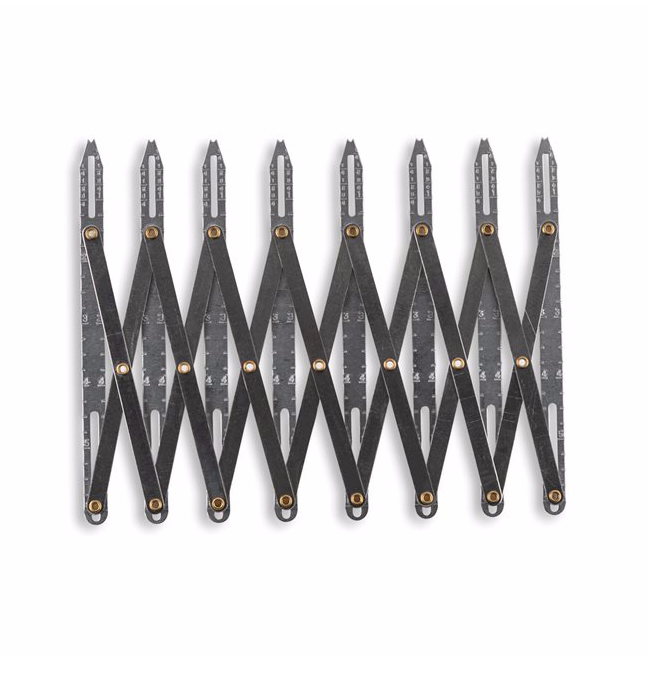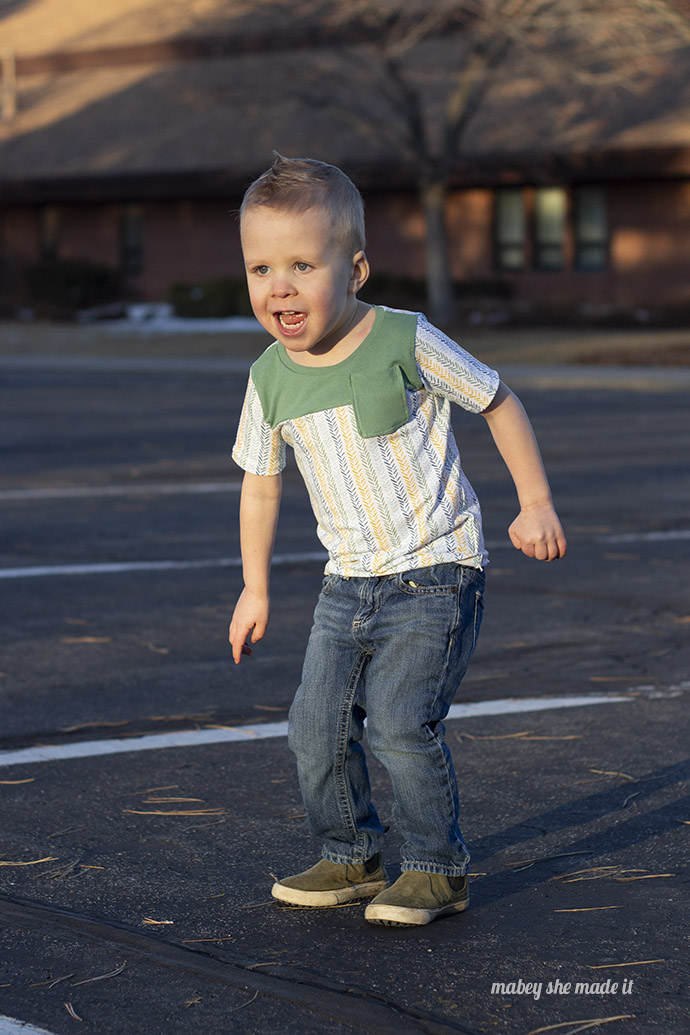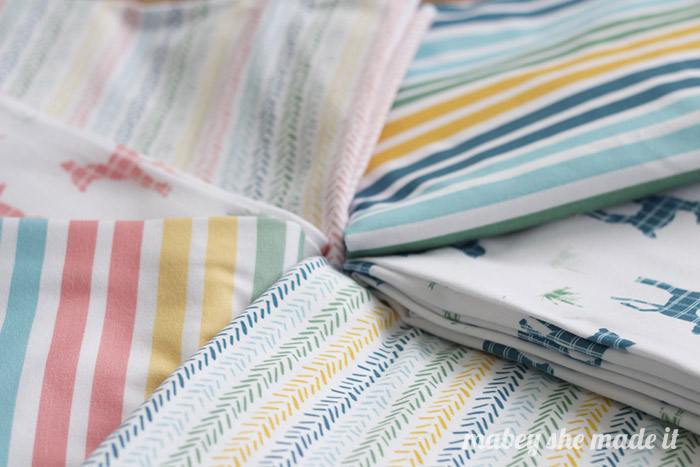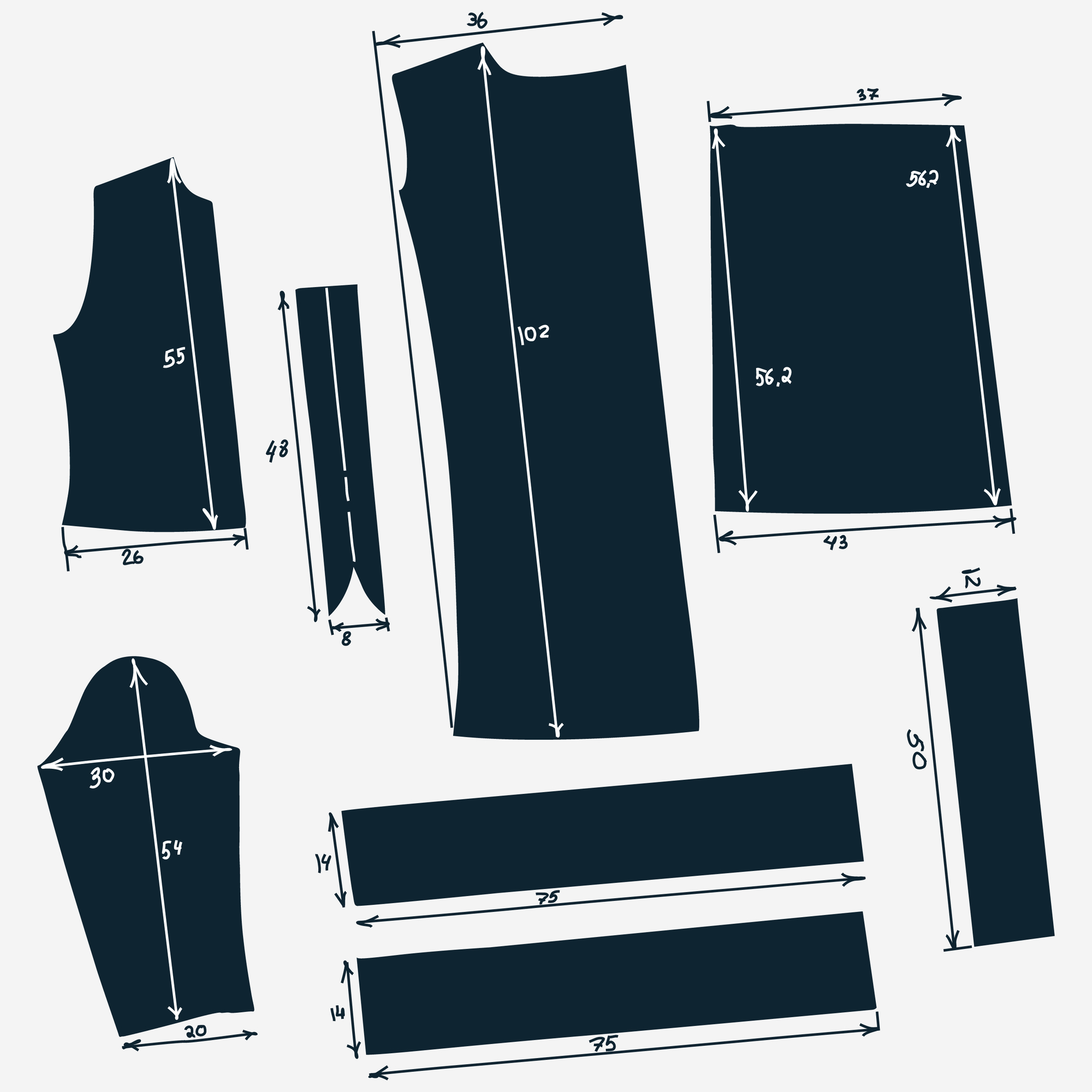There’s An Easier Way to Do That

You’ve got all the basic sewing tools, and you can get through almost anything the pattern throws at you. You are awesome. But sometimes it’s just really nice to have a tool to speed up the process and make those sewing tasks just a bit less painful.
For me, one of my least favorite sewing tasks is getting the spacing of my buttons/buttonholes perfect. I can’t tell you how many times in my early sewing where I was totally guessing at button placement or when I thought you just evenly spaced them from top to bottom and then was sad about a gap at the top. Eventually, I realized that I needed to leave an appropriate distance from the top and bottom, then divide the remaining space between my number of buttons. But we both know that math isn’t what I want to do during sewing (refer back to the circle skirt cheat sheet for that explanation).
So getting something as simple in concept as a simflex gauge is a magical solution. All the sudden, I can place the gauge on my project with my desired number of buttons and—tadah!—perfectly spaced buttons with no calculations required. I’m a happy girl.
So today I’ve put together a list of non-essential tools and supplies that will make your life so much easier, even though you can certainly do without if necessary.
Serger
Serger—If you sew a lot of knit or want to, get a serger (also called an overlocker) ASAP. It changed my sewing life for sure. All my finished seams look so much more professional after getting a serger. And knits are a breeze. It opens up a whole new area of sewing and is SO fast. If you’re just starting out, a Brother model like this one (which I’ve been using for 7 years now and going strong) is a great choice. When mine finally gives out (which it doesn’t even seem close to doing), I’ll upgrade to something like this Babylock or Juki model since I know how much I’ve used and loved serging my clothes. If I could only choose one thing on this list to get, a serger would be it.

Construction Tools
French Curve Ruler—If you’re going to do some altering or pattern hacking, a French curve ruler will make getting clean curves and natural lines so much easier. Use it to rejoin lines on a pattern or to create new ones (i.e. if you want to add a curved hem to a shirt instead of the straight hem on the pattern, this will give you a nice smooth line instead of eyeballing it).

Basting Tape—If you’re adding trim to something, you can certainly pin it in place while you sew, but you’re still going to have some play in the trim. Instead, use basting tape to “stick” it in place while you sew. It’s also great for fiddly hems, placing zippers, or anywhere else you need to hold something while you sew.

Point Turner—Get those corners super crisp with a point turner. It won’t poke through your project like a pencil and you can use the other end for great finger-pressed points.
Tube Turner—If you’re turning small tubes of fabric for straps, a tube turner is going to save you a LOT of time. And frustration. You can also use a straw and a stick to achieve the same thing, but definitely look into one of these.
Bodkin—A bodkin is faster and easier than trying to use a safety pin to thread elastic or drawstrings through casings. It holds the end of the elastic securely, is easy to hold, and slides through easily.
Jean-a-ma-jig—(also called a hump jumper). Anytime you’re going through thick fabric layers, this little tool will help you from getting stuck. Commonly used for constructing jeans, it’s also great for bags and other places where you’ve got several seams coming together that are thicker than the rest.

Simflex Gauge—I’ve already talked about this awesome tool above, so I’ll just say that it’s great for buttons, but also for anywhere you need even spacing like pleats, tucks, gathers, and smocking.
Buttonhole Cutter—Line up your finished buttonhole the cutter will easily and cleanly open them up without the risk of ripping beyond the edges of your buttonhole. Your buttonholes will look really sharp and professional. It also comes with a circular punch for eyelets.
Pressing Tools
Tailor’s ham—Use this for pressing rounded seams like sleeve caps, darts, and curved hems. You’ll get your darts and edges pressed in a natural shape and without distorting them.
Point Presser and pounding block (clapper)—Use the pointed top to get small, detail seams pressed flat like on collars, cuffs, and other tight areas. And the bottom part is awesome for getting thick seams super flat—press the seam with your iron, then hold the block over the seam to hold the heat in without scorching the fabric.
Sleeve Board—Press long tubes of fabric like sleeves or pant legs in the round with a sleeve board. It helps you get everything pressed beautifully without creases.

Good Quality Iron–you probably already have an iron, but since we’re talking about things that make life easier, I’m going to just point out that a really good iron makes a big difference. I’ve used several brands over the years (including Rowenta and Shark), but my hands down favorite iron I’ve used is this one from CHI. If you want to read more about it, I did a review here.

Now that we’ve been through all these fun tools, which of these items intrigue you most? Which are going to pick up first?













I'd love to hear your thoughts–leave me a comment!